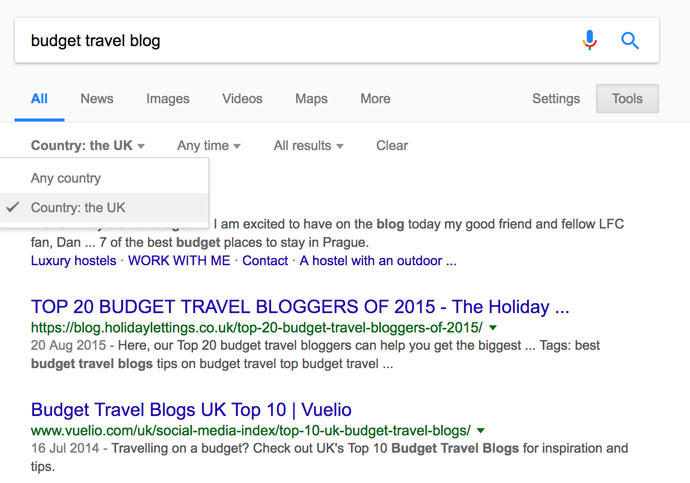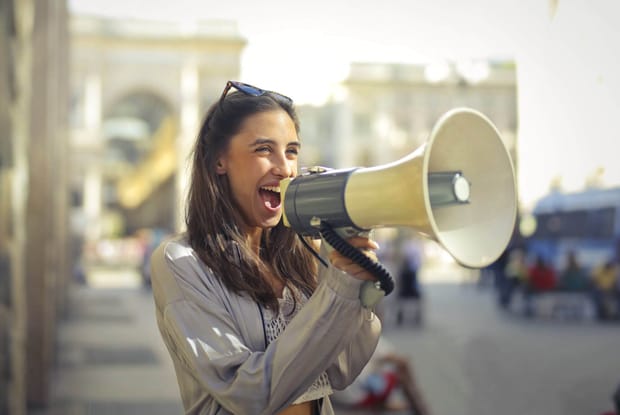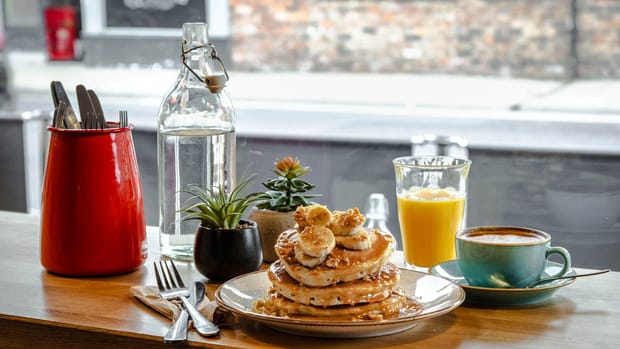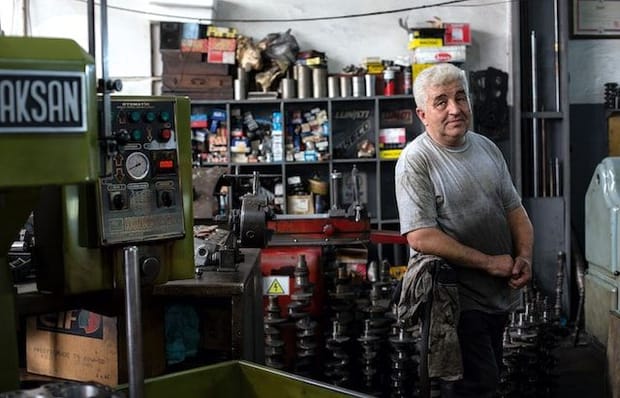If you manage marketing for a hotel or other hospitality business, you need to know about influencer marketing.
Today on the RotaCloud blog, we turn our attention to this booming form of digital marketing, and how independent hotels and small chains can take advantage of it.
This guide covers everything from the benefits of influencer marketing to common mistakes you should try to avoid.
Need help with a specific part of influencer marketing? Click through these links to jump to the relevant part of the guide.
- What is influencer marketing?
- Why should hotels use influencer marketing?
- How to find the right influencers
- How to approach influencers
- How to manage their visit
- Measuring success
- Mistakes to avoid
- Examples of influencer marketing
What is Influencer Marketing?
Influencer marketing involves targeting individuals instead of entire markets, as a traditional marketing campaign aims to do.
Today, influencer marketing is essentially the online form of word-of-mouth marketing, with influential individuals targeted for their ability to raise awareness of a business, brand or product amongst their typical audience.
The influencer acts as a middleman - you reach them, they reach your target market.
In practice, influencer marketing takes many forms. Here’s a selection:
- Sponsored social media posts (usually with affiliate links)
- Social media takeovers
- Vlogs and blogs
- Collaborative competitions and giveaways
- Long-term brand ambassadors
- Social media mentions
- Exclusive events
- Free gifts and experiences (hotel visits, personalised gifts, event-related merch)
Influencer marketing arrangements usually involve multiple types of promotion, but it’ll all depend on your brand, your goals, your budget, and the influencer.
Why should hotels use influencer marketing?
There are loads of different types of marketing campaigns, so is influencer marketing worth your attention?
Influencer marketing works because consumers are more likely to trust third parties than adverts direct from brands.
This is particularly significant when the consumer has a connection with that third party - and many vloggers and social media influencers build up a following because they manage to achieve such a connection with a certain audience.
That means influencer marketing is about more than building awareness - it also removes the fundamental distrust many consumers have of adverts and other branded content.
Followers want to try the products and experiences that their favourite influencers have enjoyed. They’ve already 'discovered' your hotel. They’ve already seen a recommendation for it. They’re half way down the marketing funnel already.
Another big plus of influencer marketing campaigns is their flexibility. You can build a campaign around many different goals, such as:
- Building brand awareness
- Driving traffic to your site and social media channels
- Generating bookings during quiet periods
- Generating bookings for events
- Reaching out to untapped markets
- Increasing direct bookings
You can easily form your influencer marketing campaign around each of these goals and make adjustments as necessary.
The benefits of influencer marketing don’t end there:
- It’s relatively affordable. Offering influencers free stays at your hotel when the rooms would otherwise be empty anyway means you don’t lose much in the way of revenue, but the benefits can be huge.
- They bypass ad-blockers. As more of us switch ad-blockers on, hotels need a new way to reach potential visitors. Influencer marketing does just that.
- It creates buzz on social media. If you find the right influencer to promote the right product, your brand’s reach will stretch beyond their followers and to a wider audience. Who knows? Maybe your brand will start trending locally.
- It’s an emerging form of digital marketing. Consumers aren’t fed-up with influencers plugging products or experiences - yet. That means it’s still very effective. Sure, some day there’ll be a saturation of this type of content and it’ll be more difficult to make an impact - but we aren’t there yet.
Despite all these overwhelming benefits, remember that influencer marketing won’t work for every hotel.
Generally, it’s a good fit for hotels that meet these criteria:
- Located in a visually appealing area
- Furnished to a high quality
- Have the ‘wow’ factor
- Are independent or part of small chains
- Have an established social media presence
- Regularly track social media and website stats
If you’re not sure if influencer marketing will work for your business, you can always trial it on a small scale before opting for a more extensive strategy.
How to Find the Right Influencers
Thousands of Instagrammers work full time as social media influencers, making a living from brand deals and sponsorship arrangements. Therefore, increasingly you’ll find that influencers come to you instead of having to reach out to them.
If you’re just starting out or you have specific events you’d like to plug, you will have to be a little more proactive about finding the right influencers.
Still, even if the influencers come to you, you’ll need to figure out which influencers to turn down and which to work with.
Let’s go through this process step-by-step.
Step 1: Know What You’re Looking For
You should know your hotel’s brand inside out, as well as the types of visitors your hotel typically attracts - and wants to attract.
It makes sense, therefore, to look for influencers whose followers have similar characteristics to what you’re on the lookout for.
For example, if you run a budget hotel, look for bloggers who write about travelling on a shoestring.
The influencer’s location should also be considered. Are you looking to attract more visitors from abroad, or do you want to attract visitors from elsewhere in the UK? This all depends on your hotel and its location.
Step 2: Decide on a Platform
Instagram is the major social media platform for influencer marketing for hotels, given its focus on media. However, you might also want to consider working with influencers who are active on Twitter, Snapchat, or even Facebook.
Most of today’s YouTube vloggers are active on multiple social media platforms as well as their YouTube channel, so find out which platforms they like to use the most, and what content they post there. For example, YouTubers may not post links to their recent videos on their Instagram accounts, but they do on Twitter.
Finally, don’t forget to consider travel bloggers!
Here’s a quick run-down of the characteristics of each of these platforms:
Instagram
- Popular with teenagers and young people
- Audience skews female
- Most popular content includes fashion, travel, beauty, food
- Best for photos and short videos
- Heavy use of hashtags for discovery
Facebook
- Popular with all demographics
- Organic content reliant on reactions shares to get noticed - use photos, gifs and video
- Paid content uses highly-specific targeting to reach desired audience
- Content discovery difficult for non-paid content
Snapchat
- Popular with teenagers
- Audience skews female
- Popular content includes fashion, beauty, travel
- Best for photos, short videos, fun content
Twitter
- Popular with young people and older professionals
- Audience tends to be slightly richer and more educated than other networks
- Gender split is roughly even
- Most popular content includes news, commentary on current events
- Heavy use of hashtags and trends for discovery
- Best for content with high relevance in the very short-term
YouTube
- Popular across all age groups, but particularly amongst young people
- Audience gender split 50-50
- Huge range of popular content topics including gaming, beauty, vlogs, music
- Most discovery occurs via trending section and recommended videos
- Best for high-quality video content
- The right content receives views for months and years
Blogs
- Audience varies significantly depending on blog and platform
- Some platforms, like Tumblr, have younger audiences and are highly image-based
- WordPress (and other similar platforms) are more suited to text-heavy blogs
- Users discover blogs via Google searches and ‘blogrolls'
- The right content keeps receiving traffic in the medium to long term
You’ll want to choose a platform that you’re familiar with, and preferably one that you have a company account on (if you want to reach bloggers, check which social media accounts they use).
Step 3: Finding Your Influencers
You know what kind of influencer you want to work with, and you know which platforms you’d like to use to promote your hotel.
Now you just need to find influencers.
(If you’ve got hordes of influencers approaching you already, skip ahead to the next section.)
There are a couple of ways to do this.
First, you can use discovery tools like Buzzsumo or Followerwonk to search social media bios to find your influencers - for example, type in ‘Yorkshire travel blogger’ into Buzzsumo and you’ll find a list of Twitter users with those words in their bio and location info. You’ll then need to sift through the results to find suitable influencers. There are free feature-restricted or trial versions of both these tools
You can also try searching directly within the social network of your choice, either using hashtags or just plain text. You’re better off finding the right hashtags, if you can, as the social networks’ search functions often leave much to be desired.
For example, #yorkshireblogger gives us this result on Instagram:

You can then click through the posts to find suitable influencers.
Alternatively, search for influencers through Google. There are endless routes here:
- Search directly for ‘list of travel bloggers’
- Search for phrases using double quote marks, such as “budget travel blogger”
- Add your chosen social network to the search query
- Restrict search results to the UK using the Tools menu (see below)

Another approach is simply to ask your network - again, using the appropriate hashtags and mentioning industry groups or groups of bloggers.
Your competitors’ own attempts at influencer marketing can also be a good starting point. See if they’ve shared any posts, photos or videos from influencers.
Finally, and perhaps most importantly, look back through your social media mentions for previous satisfied guests who have some degree of online influence - they’re likely to be receptive to any brand deals you offer.
Step 4: Choosing Your Influencers
Once you have a list of, say, 10-30 potential influencers, now’s the time to narrow them down.
The most eye-catching number is follower count (or subscription numbers, in the case of YouTube) - 50k followers means 50k people learning about your hotel, right?
Sadly not.
Influencers know that brands pay too much attention to follower numbers, so less-than-honest individuals will buy followers to gain attention - but these fake followers are hardly likely to engage with their content, let alone be part of your hotel’s target audience.
You’ll need to look more closely at influencers if you want to be sure their reach is quite as large as they say it is. You can ask influencers for engagement stats, and bloggers for unique monthly visitors. Most importantly, take a look at their social media feeds and see how much engagement they receive on a typical promotional post. Ask for a media kit.
See if they’re active in the online community. Do they get involved with hashtags and discussions? Do they attend bloggers’ events?
Remember: numbers aren’t everything. Influencers need to be a good fit for your brand, too.
You also need to ensure that any influencers you choose will benefit from the arrangement, too. More influential individuals are in a position to demand more from a brand deal, so be realistic about the influencers you target.
If you’re trying out influencer marketing for the first time, just pick out two or three influencers to test the water.
How to Approach Influencers
Before you even think about approaching an influencer, you need to know what you want to offer them.
Generally speaking, hotels and other hospitality businesses offer influencers one of three things:
- A complimentary stay or visit
- An invitation to an exclusive event (such as a reopening, a preview of a seasonal offering)
- Blogger meetups
In return, businesses typically expect a few social media posts or a blog post on their visit.
Unless you’re targeting the biggest influencers, no money changes hands. In most cases, there’s not a written contract in place.
Some brands will ask influencers to mention certain aspects of their stay (such as the new artwork in their room, or the extensive cocktail menu at the hotel bar), but influencers will generally want to maintain their editorial freedom - unless you pay them.
See how they’ve handled brand deals in the past to gain an idea of how previous arrangements worked: how many social media posts can you expect? How long will the blog post be?
Remember: with no written contract you can’t do anything if the influencer doesn’t play their part in the arrangement. But by offering them a genuinely exciting or unique experience at your hotel or destination, they’ll be keen to share their visit with their followers.
Now that you have a clear idea of what you can offer influencers, it’s time to get in touch.
Before approaching them directly, interact with their social channels - share their tweets, comment on their photos, or link to their blog. This’ll mean that any emails or DMs you send them won’t be entirely out of the blue.
After that, head to their primary social network or their blog, and look for contact info - always use the email address or contact method specified - don’t try and be clever and dig out their personal email address or approach them by DM if they prefer other contact methods.
(NB: These days, some top influencers will work through agencies - you won’t be contacting the influencer directly.)
When sending out that first email, follow these guidelines to maximise your chance of getting a positive response:
- Keep it short. Influencers are busy and don’t want to read through a wall of text. Use short paragraphs and get to the point.
- Keep it personal. Don’t send out identical emails to all the influencers you want on side. Show that you’ve taken the time to understand what makes them tick. Use first person instead of third.
- Find common ground. Maybe you’re both Liverpool fans, or maybe you have relatives based in the same part of the world. Common ground is key to making connections online as well as offline!
- Be humble. Don’t brag about your TripAdvisor score or the money you’ve spent on your revamp.
- Flatter them, but don’t go crazy. False flattery will get you nowhere - feel free to compliment the influencer’s blog or photography, but only if the compliment is genuine!
- Explain the value of the content to their followers. Influencers aren’t just in it for the freebies - they want to grow their reach and keep their current followers onboard. If you can explain why your proposition will benefit their followers, you’ll give the influencer another reason to say yes.
Here are a few email templates to get you started:
The Cold Email
Subject Line: Scotland photography opportunity (+ invitation to new hotel)
Hi [Influencer],
I stumbled across your Twitter feed when my friend [name] shared your wonderful photos from your trip to the Isle of Skye back in June - you had great luck with the weather!
I noticed that you enjoy photographing the Scottish wilds, so I thought I’d get in touch with an invitation to our new boutique hotel in Fort William. There are endless photo opportunities nearby (Ben Nevis, Glencoe, and plenty of Lochs!), that I’m sure your followers would love to see on their feeds.
Anyway, I wanted to invite you to take a complimentary stay at our hotel - we’d love to hear your feedback and, of course, see your photos of this beautiful part of Scotland!
Please let me know what you think - and thank you for your time!
[Your Name]
Re-Approaching a Previous Contact
Subject line: Theme Park exclusive event: November 18th
Hi again [Influencer],
I noticed that you were back on the blogosphere after your break - I hope you enjoyed your time off!
Seeing how much your followers loved your previous blog post about our theme park, I just wanted to give you a heads-up about a Christmas event we’re planning.
We’re holding a special preview day that I think you and your family would really enjoy! Let me know if you’d like to visit again, and I’ll send you across a complimentary family ticket and exclusive event invite.
All we ask in return is another wonderful blog post - and perhaps a shout out on Facebook! :)
Thanks again - let me know if you have any questions!
[Your name]
Social Media Takeover
Subject Line: Instagram Takeover
Hi [Influencer],
I just wanted to get in touch to thank you for giving our hotel a shout-out on Instagram when you visited in April - we love seeing satisfied guests!
Seeing as you enjoyed your stay so much, we wondered if you’d be at all interested in taking part in an Instagram takeover.
It’s simple: we give you and your plus one a complimentary stay at the hotel for the weekend and let you enjoy your stay as usual. We’ll ask you to send across some of your favourite photos of your stay to our marketing team (with captions), and we’ll post them to our Instagram account on your behalf.
I think your followers would love to see more photos of our hotel and the surrounding area, and we’d love to have you back at the hotel!
If this is something you’d be at all interested in, let me know and we can talk details :)
Thanks for your time!
[Your name]
Chasing Up
Subject line: Follow-up
Hi [influencer],
Sorry for bothering you, I just wanted to get in touch to see if you missed my email dated [5 days ago]? It was regarding a complimentary stay at [hotel]. I’ve pasted the text below.
[Previous email]
If you’re busy, sorry - please ignore this email - I won’t contact you again!
Many thanks,
[Your name]
How to Manage Their Visit
Unless you’re holding a special event for multiple influencers, here’s how you should treat bloggers and vloggers when they come to stay:Exactly as you treat every other guest.
Most influencers don’t actually want to be fussed over - they just want to be treated like every other guest. Sure, recommend some local attractions or your favourite items on the restaurant’s menu, but don’t give them special treatment.
Think about it: if you go overboard with freebies, your influencers may start to feel that you’re bribing them to leave a glowing review - and this realisation will only lead to them doing the exact opposite. There’s one exception: if your influencers request interviews with staff or behind-the-scenes photos, let them.
If you’re holding an event solely for influencers, disregard this advice and go all out to impress them. The more shareable moments of social media gold, the better.
After the Visit
If you want to track how many visitors influencers send your way, send influencers a referral link, generated with Google’s Campaign URL Builder. This’ll give you a unique URL for each influencer, so that you can find out how many of their followers reach your site or social media pages.
You can also give influencers unique discount codes to share with their followers, letting them treat their followers to a cheaper stay at your hotel, and giving you the chance to track the effectiveness of the deal.
One note on bloggers: following their visit, be sure to send across your media kit (if you have one) or any professional photos you’ve had taken. This’ll help them assemble a blog post that’s visually appealing and shows your business at its best. Of course, you can’t insist that a blogger uses your photos, but at least give them option!
Measuring Success
When you started your influencer marketing campaign, you should have chosen a primary goal, such as increasing bookings for an event, or increasing your email subscribers.
Once the influencer has finished posting about their visit, it’s time to review your stats. Look at the metrics that relate to your goal, and don’t get bogged down in the data. Here’s a selection of what to look for:
- Website visits via influencers’ referral links
- Unique website visitors
- Mentions on social media
- Comments, likes and views on the influencer’s social media posts mentioning your hotel
- Increase in email subscribers (compared with normal rate of growth)
- Change in rate of bookings for a specific event (relative to previous events)
- Change in rate of bookings during a specific time period (relative to the same time period in previous years)
- Change in rate of bookings from specific demographics/regions
- Number of bookings generated via the influencer’s unique discount code
- Any press coverage (online or offline)
Influencer Marketing Mistakes to Avoid
We might have made influencer marketing sound easy, but there are numerous traps you need to avoid - particularly if you’re trying out this type of marketing for the first time.
Here are some of the most common problems brands have with influencer marketing:
- Overvaluing follower numbers. High engagement is far more important than high follower numbers. Don’t approach influencers if their follower count seems questionable.
- Brand-influencer mismatch. Even if you find a travel blogger with high engagement and follower numbers who has carried out similar brand deals in the past, if their audience don’t match your target market you won’t gain much from working with them. Choose influencers that are relevant to your brand, even if their numbers aren’t so great.
- Lack of transparency. It’s best to make clear what you expect the influencer to do for you in return for their complimentary stay at your hotel. Be sure to talk details after they’ve responded to your initial approach.
- Trying to take control. Unless you’re paying the influencer, you should be prepared to give them complete creative freedom on how to review and cover their stay at your hotel. If you overstep the mark and try to take control, the influencer’s goodwill towards you will vanish.
- Falling foul of disclosure rules. It’s still an emerging area of UK law, but make sure you follow the Committee of Advertising Practice (CAP) rules. If money changes hands, influencers must label the content as an ad. If you offer an influencer a free stay and dictate what they must say about it, it’s also classed as a marketing communication. There are grey areas here, so be careful.
- The influencer writes a bad review. There are two possible causes of this: first, the influencer genuinely disliked their stay. Deal with this by explaining how you’ll fix things - and then fix them! Second, the influencer may have been annoyed by how you handled the arrangement. Maybe you tried to dictate what they could say about you, or you said something tactless in your emails.
- Failing to plan ahead. Full-time influencers will have their schedules planned months in advance. If you want to invite an influencer to visit you for a certain event, be sure to send out the event invitations 3-6 months in advance.
- Not following up. If your arrangement went well, don’t leave it there! Get back in touch with the influencer with updates on how your hotel’s doing, and keep interacting with them on social media - it’s likely they’ll be willing to work with you again in the future.
Examples
Here’s a selection of examples of influencer marketing for hotels.
Instagram: Rosewood London
YouTube: Marriott
Travel blogs:
Emily Luxton
Final thoughts
From deciding your campaign goals to reading the influencer’s finished blog posts, influencer marketing is a long yet potentially lucrative process. We highly recommend giving it a chance at your hotel, and adjusting your approach based on your own circumstances and lessons learnt along the way.
If you’d like to try out other types of marketing campaign, head to our blog archives — we’ve got plenty more marketing tips to go around!





